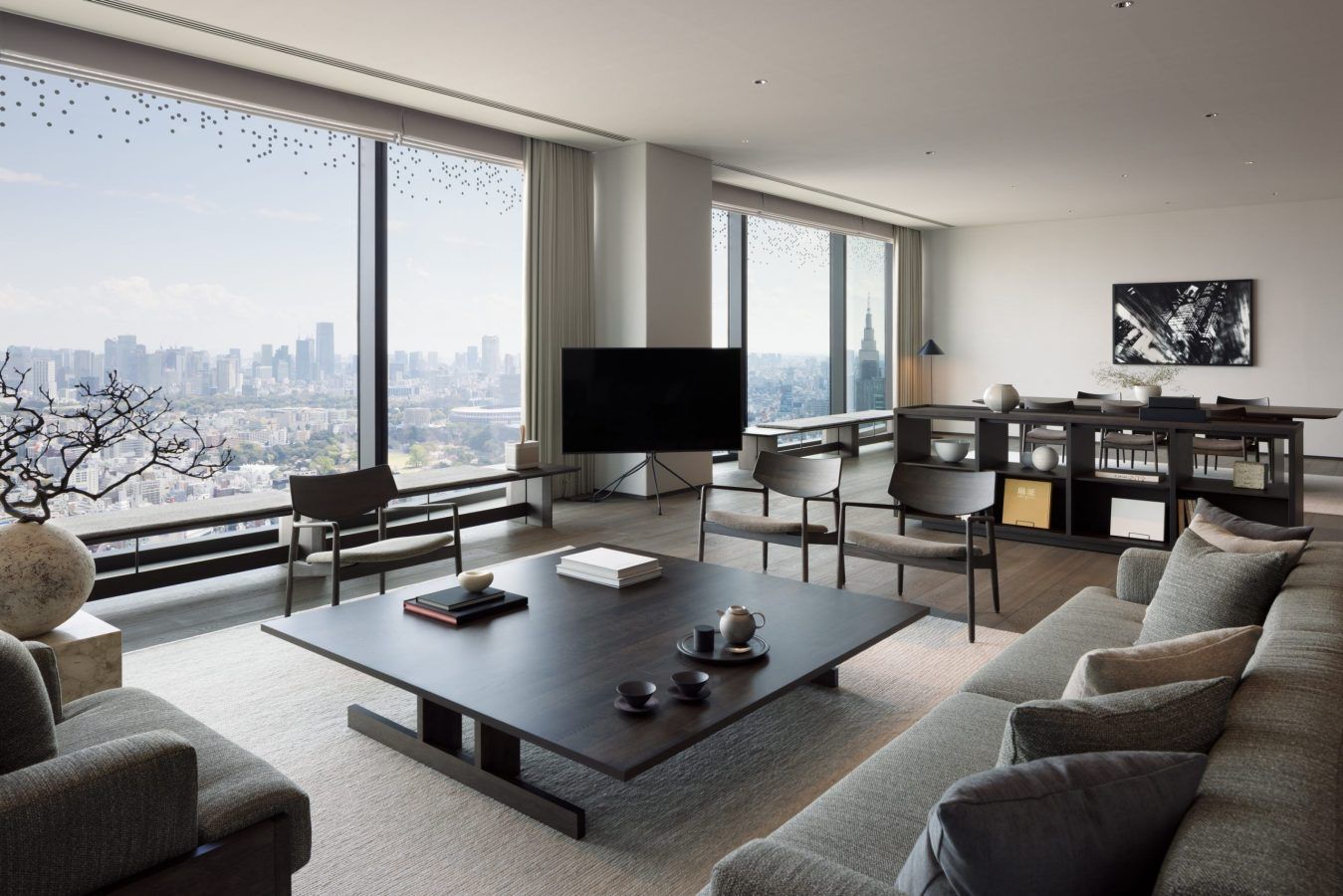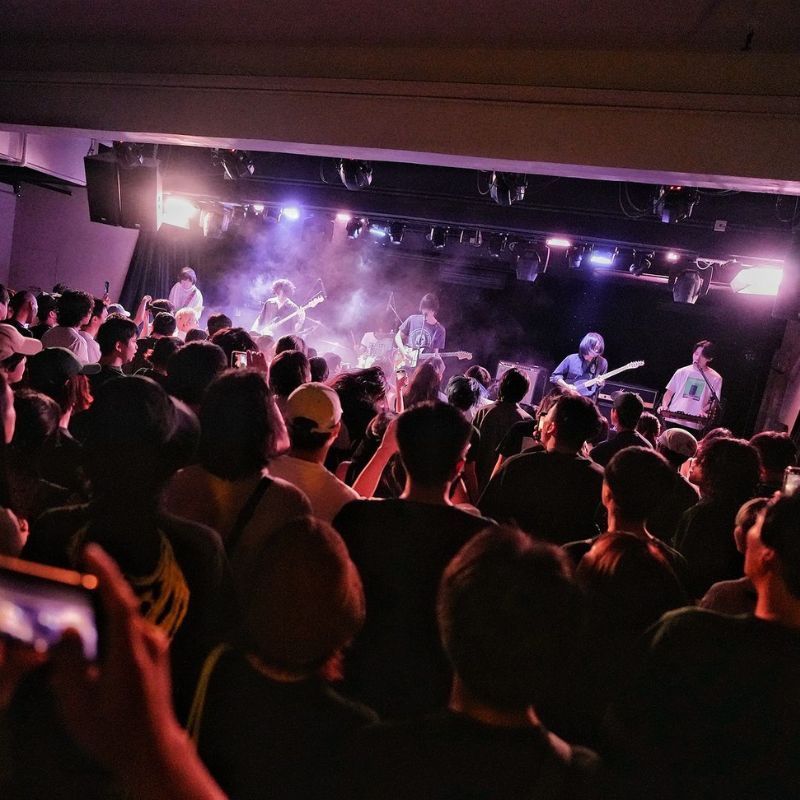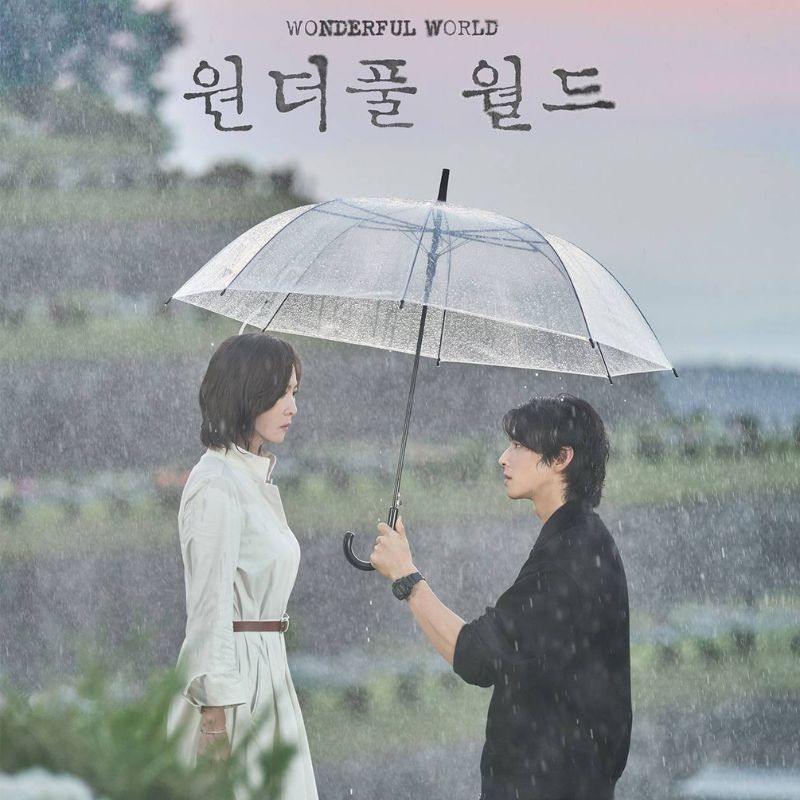
John Clifford is a member of Travel + Leisure’s A-List, a collection of the top travel advisors in the world, and can help plan your perfect getaway. Below is an excerpt from one of the many itineraries he creates — in this case, a food-focused LGBTQ+ friendly sojourn through Japan.
Day 1: Arrival in Tokyo
After arriving in Tokyo and checking in to the Trunk Hotel, you’ll head to a half-day guided tour of the Outer Market and the Ginza shopping area, followed by a ramen dinner tour.
Outer Market

While the wholesale fish market has been relocated to its new Toyosu location, Tsukiji’s Outer Market is as busy and bustling as ever. The Outer Market is a mixture of wholesale and retail shops selling everything from carrots to cakes, and pottery to kitchen knives. It is also filled to the brim with restaurants serving the freshest sushi and sashimi. In contrast to Toyosu’s new ultra-modern facility, Tsukiji’s Outer Market retains an essence of traditional charm that makes it well worth a visit.
Ginza
Ginza is Tokyo’s most famous upmarket shopping, dining, and entertainment district, featuring numerous department stores, boutiques, art galleries, restaurants, nightclubs, and cafes. One square meter of land in the district’s centre is worth over ten million yen, making it one of the most expensive real estate in Japan. It is where you can find the famous USD 10 (SGD 13) cups of coffee and where virtually every leading brand name in fashion and cosmetics has a presence. From 1612 to 1800, today’s Ginza district was the site of a silver coin mint, after which the district was eventually named. Ginza evolved as an upmarket shopping district following the 1923 Great Kanto Earthquake. Most shops in the Ginza district are open every day of the week. If you are feeling a bit hungry, or just interested in food, the depachika (basement floors) of department stores are filled with foods of all kinds. Most are already prepared and ready to take away and eat at home, which is exactly what many people do in order to balance busy work and home lives. A mouthwatering mix of Japanese and Western dishes, sweets, and snacks await.
A ramen dinner tour
During this personalised 2-3 hour ramen tour, your expert guide will take you to some of Tokyo’s hidden ramen shops for lunch or late afternoon meals. He will take you to two ramen restaurants, one for a thick, rich bowl of ramen and one lighter bowl. Ask him any question about ramen and he will be able to answer. Meet your ramen expert in your hotel lobby.
Book your stay at The Tokyo EDITION via Booking.com
Book your stay at The Tokyo EDITION via Agoda.com
Day 2: Touring Tokyo
Your guide will meet you in the hotel lobby for a private vehicle tour of Sensoji Temple and Kaminarimon Gate, and the Nakamisedori Sensoji Temple — possibly one of the most photographed structures in the city. An official temple was built in 645 AD, making it not only the oldest temple in Tokyo but among the oldest in Japan. Sadly, after standing for 1300 years, it fell to the bombings of WWII, only to be rebuilt during the aftermath as a symbol of peace and resurrection to the Japanese people.
Today, millions of visitors pass through the Kaminarimon or Thunder Gate annually, known for the huge brightly painted lantern dominating the entrance. Just beyond Sensoji’s Kaminarimon, you’ll find yourself on the Nakamisedori, a vibrant shopping street lined with souvenir shops selling everything from Samurai swords to paper fans, and all manner of snacks and trinkets. teamLab Planets One of Japan’s most creative spaces, this art encounter places you within large-scale installations that combine digital and physical media. The variety here is impressive, with infinity rooms of digital light, knee-deep illuminated water, and maze-like cavernous halls of huge balloons. There are plenty of memorable surprises in this uniquely Japanese art space – and all highly Instagrammable.
Roppongi Hills

Roppongi Hills is one of the best examples of a city within the city. The building complex in the Roppongi district is home to an amalgamation of offices, apartments, shops, restaurants, a hotel, the Mori Art Museum, a view deck and more. The 238-meter Mori Tower at the centre is one of the tallest buildings in the city. Just behind the tower and hotel is Mori Garden, and TV Asahi is also located on the site. The Mori Art Museum, located near the top of Mori Tower, shows innovative exhibitions of international contemporary art. At the heart of Roppongi’s arts district, Tokyo Midtown feels almost like a city in itself. Home to a sophisticated mix of shops, galleries, and residences, it is a pleasant area to explore. The main shopping mall features international restaurants, a dining terrace, and a range of stores from everyday essentials to luxury boutiques. The complex also contains many museums and art galleries. Their top floor features interior design and houseware shops as well as the Suntory Museum of Art, a modern space with beautiful city views that displays traditional works.
In the evening: Shinjuku
Shinjuku is one of the 23 city wards of Tokyo but is often referred to as the huge entertainment, business, and shopping area around Shinjuku Station. Colourful signs decorate the narrow streets at all stories, blocking out the city sky and filling it with life. More than 2 million passengers go through Shinjuku Station every day, making it the busiest railway station in Tokyo, which effectively makes it the busiest railway station in the world. Shinjuku’s skyscraper district is home to many of Tokyo’s tallest buildings, including several premier hotels, the twin towers of the Metropolitan Government Office, and is also home to famous game companies, such as Square Enix (right outside Higashi-Shinjuku station). Dinner tonight is at Kaiseki Komuro for flavours of cha-kaiseki, a meal served during a traditional Japanese tea ceremony. Since opening in 2000, these two Michelin-starred restaurants have become a gem for urban gourmands that long to immerse themselves in the beauty of the seasons.
Book your stay at Mandarin Oriental via Booking.com
Book your stay at Mandarin Oriental via Agoda.com
Day 3: Tokyo’s museums and shopping
Your guide will meet you in the hotel lobby to head to the Nezu Museum, a collection that once belonged to Nezu Kaichiro, an industrialist and former president of the Tobu Railroad. Although he enjoyed everything from delicate calligraphy to Chinese bronzes, the centre of the collection concerns “the way of tea.” There are several authentic teahouses scattered throughout the extensive gardens, as well as many lovely artefacts. A collection of painted folding screens in the Rinpa style is not to be missed. The museum’s grounds are a highlight as well. Designed by Kengo Kuma, one of Japan’s brightest architectural stars, the soaring roof and strategic use of glass and steel create a perfect setting for the works within.
Harajuku
Harajuku is the epicentre of Japanese street fashion and fashion subcultures. The neighbourhood’s modern identity stems from the post-war history of the area, but its continuous development is heavily reliant on today’s youth culture trends. The Harajuku area is divided by a boulevard called Meiji-dori, which separates its two main areas: Takeshita Street and Ura-Harajuku. The side most internationally associated with Harajuku is Takeshita Street, an extremely popular pedestrian street overflowing with fashion boutiques, sweet crepe stands, innovative snack shops, photo booths, and fast food outlets marketed to tweens and teens. Even though many of Takeshita Street’s energetic trends are starting to cross over to the other side, Ura-Harajuku has retained a more relaxed atmosphere. Its streets lie behind Omotesando and are filled with high-end vintage shops, street-fashion brands flagship stores, privately-owned boutiques, and cafes.
Daikanyama
This area of Tokyo is just one station away from busy Shibuya but has a very different atmosphere, with small high-end boutiques, restaurants and cafés sharing the space with embassies, high-class residential areas, and Hillside Terrace, the symbol of Daikanyama. The laidback vibe and trendy fashion found here have made it a hot spot among the hip crowds of Tokyo but remains a pleasant counterpart to the busy streets of Shibuya.
Tempura Cooking Class

This private cooking lesson from the head chef of one of Tokyo’s best tempura restaurants is the ideal way for travellers to experience Tokyo gastronomy at its finest. The Tempura restaurant is located inside a former geisha house in a historical Tokyo district. You will learn cooking techniques from the head chef himself, and explore this Japanese specialty’s rich history by tasting and comparing Edo-period vs. contemporary tempura. As part of the class, participants enjoy a full-course meal with a sake pairing personally selected by the chef.
Dinner at Sushi Saito
Chef Takahashi Saito is at the helm of this restaurant with 3 Michelin stars and nearly impossible to get seating. Booked in The Private Room, you will enjoy such delicacies as bonito sashimi, tender simmered octopus, kuruma-ebi shrimp, and more.
Book your stay at The Peninsula Tokyo via Booking.com
Book your stay at The Peninsula Tokyo via Agoda.com
Day 4: Taking in Kyoto
You’ll take a bullet train to Kyoto, where you’ll be staying at the Hakone Retreat Villa. Your guide will take you to the Old Tokaido Road, a highway which once linked Tokyo and Kyoto during the feudal Edo Period. Today, you can enjoy a beautiful cedar-lined passage of the road along the shore of Lake Ashinoko. Even a short walk down the cobbled highway for a few minutes is a wonderful way to immerse yourself in the nature and history of the area. Visitors desiring a longer walk can continue deeper into the mountains towards the restored Amazakechaya Teahouse.
Hakone Shrine
Hakone Shrine stands at the foot of Mount Hakone along the shores of Lake Ashi. The shrine buildings are hidden in the dense forest but are well advertised by their huge torii gates, with one standing prominently in the lake and the other two over the main street of Moto-Hakone.
Hakone Open Air Museum
The Hakone Open Air Museum is a harmonious mix of nature and art. This museum allows visitors to experience the beautiful mountainous backdrop of Hakone while viewing numerous sculptures and art exhibits spread out across the museum’s grounds. The main building of the museum features works by various artists including Picasso.
Kaiseki Dinner at Nijo Yamagishi
Born from the near impossible-to-book the kaiseki favourite Tominokoji Yamagishi, Nijo Yamagishi is a chance to enjoy premium quality in a more casual setting, with hot pot cuisine from an exciting young chef.
Book your stay at Hakone Retreat villa via Booking.com
Book your stay at Hakone Retreat villa via Agoda.com
Day 5: Amid the Geisha of Gion

You’ll transfer for a stay at luxury ryokan Yoshida-Sanso, the historical university villa of Prince Higashifushimi, and then explore Gion. Gion is Kyoto’s most famous geisha district located near Maruyama Park. The district has a number of traditional machiya townhouses where geisha and maiko (apprentice geisha) enter and exit in the evening when entertaining guests. Lucky visitors might catch a glimpse of a geisha on her way to her next appointment.
Tea with Maiko
Enjoy tea, conversation, and a short performance from one of the few professional maiko (geisha-in-training) still active in Kyoto. The teenage maiko will explain in detail about her life and what it takes to become a geisha – a rare opportunity that many travellers never have a chance to experience. This unique meeting is a great way to enjoy geisha culture in the former capital of Kyoto. You can take a photo with the maiko as well.
Dinner at Gion Nishikawa
Michelin-starred chef Masayoshi Nishikawa crafts unique, seasonal kaiseki dishes at this outstanding restaurant, and offers vibrant counter seating to interact and watch the chef’s magic.
Book your stay at The Gate Hotel Kyoto Takasegawa by Hulic via Booking.com
Book your stay at THE GATE HOTEL KYOTO TAKASEGAWA by HULIC via Agoda.com
Day 6: Temples and culture in Kyoto

The Otagi Nenbutsuji Temple is one of Kyoto’s hidden gems due to its isolated location and unique display of Buddhist art. Although the roots of this temple go back to the 8th century, the current grounds were revitalised in the modern era by Kocho Nishimura, a respected Buddhist artist and priest. In the 1980s, he invited worshippers to this small mountain temple to learn the techniques of stone carving to create 1,200 rakan (a disciple of Buddha) statues that are now on display at the temple. No two statues are the same, with many depicting lighthearted and comical features that you rarely find in Buddhist art. From singing priests and parents cradling babies to acrobats and surfers, all walks of life are present in stone at Otagi Nenbutsuji. Nishimura’s family continues to care for the temple and carry on his legacy of blending personal expression through art with the teachings of the Buddha.
Saga-Toriimoto Street
One of Kyoto’s best-kept secrets is this quiet district tucked away in the hills on the western rim of the city. A long street runs through a preserved village with rows of charming wooden houses below forested slopes. This is a rare chance to see a grouping of original thatched-roof houses so close to the city. Many of these farmhouses are from the Meiji era (late 1800s/early 1900s) and remain in their original state. At the top of the street is a lovely traditional teahouse with a mossy thatched roof and an impressive torii gate. Along the road are several quaint shops selling regional crafts, including bamboo goods, pottery, and whimsical local folk art made from the cocoons of silkworms.
Arashiyama Bamboo Grove
The walking paths that cut through the bamboo groves make for a nice walk or bicycle ride. The groves are particularly attractive when there is a light wind and the tall bamboo stalks sway gently back and forth. Bamboo has been used to manufacture various products, such as baskets, cups, boxes and mats at local workshops for centuries. When you stop for lunch at Izusen Enjoy, you’ll enjoy traditional vegetarian Buddhist cuisine (shojin-ryori in Japanese) in a charming space on the backstreets of the quiet Sagano district. The vegetarian fare is sure to delight and surprise both your tastebuds and eyes.
Okochi Sanso Villa
This samurai-style villa is the former home and garden of the famous Japanese film actor Denjiro Okochi (1898-1962), known for his roles are fierce samurai in the early silent film days. The beautiful garden is dotted with rustic teahouses and hidden pathways that open onto expansive city views. One of the best spots for early autumn leaves in Arashiyama, the villa also has a rest area where matcha tea and unique sweets are served.
Kinkakuji Temple
Perhaps best known in English as the “Temple of the Golden Pavilion,” this icon of Kyoto rises above a quiet reflecting pond, shimmering in its layers of gold leaf regardless of the weather. A remainder of a former villa of the Shogun, the pavilion successfully incorporates three distinctly grand architectural styles: Shinden, Samurai, and Zen. Rebuilt in the mid-20th century, Kinkakuji remains the epitome of Kyoto’s gilded past as the cultural capital of the nation. The layout of the garden is based on ancient Chinese writings, and the stones of the main pond serves as a representation of the Japanese islands themselves. As a whole, the entire landscape serves as a fine example of the magnificent villa that once occupied this space.
Candlelit Tea Ceremony and Ritual

As dusk falls and the city begins to settle, enter the traditional home of our in-house tea expert for a special experience. Candles light your way through the garden as you remove your shoes and step into a charming tea room. This special occasion is multifaceted and focuses on more than just tea. You’ll begin with a glass of local sake paired with two light seasonal foods as a way to better understand the culinary culture of Kyoto. Purified by the sake, you are ready to move on to the main event: an informative tea ceremony served with sweets. Your host will explain the meaning behind the ritual and how it ties to both the mundane world and the spiritual realm. This is an ideal pre-dinner activity to whet the appetite and learn about an important element of Japanese culture.
To work with John or to read the complete version of his Japan LGBTQ+ culinary adventure itinerary, contact him at john@internationaltravelmanagement.com.
Book your stay at TRUNK (HOTEL) via Booking.com
Book your stay at TRUNK (HOTEL) via Agoda.com
shop the best travel experiences here
All currency conversions were done at the time of writing
(Feature Image Credit: vladimir zakharov/Getty Images)
This story first appeared on travelandleisure.com
Related: Exploring Japan: A 10-Day Itinerary Packed With Fun And Adventure For First-Timers


















